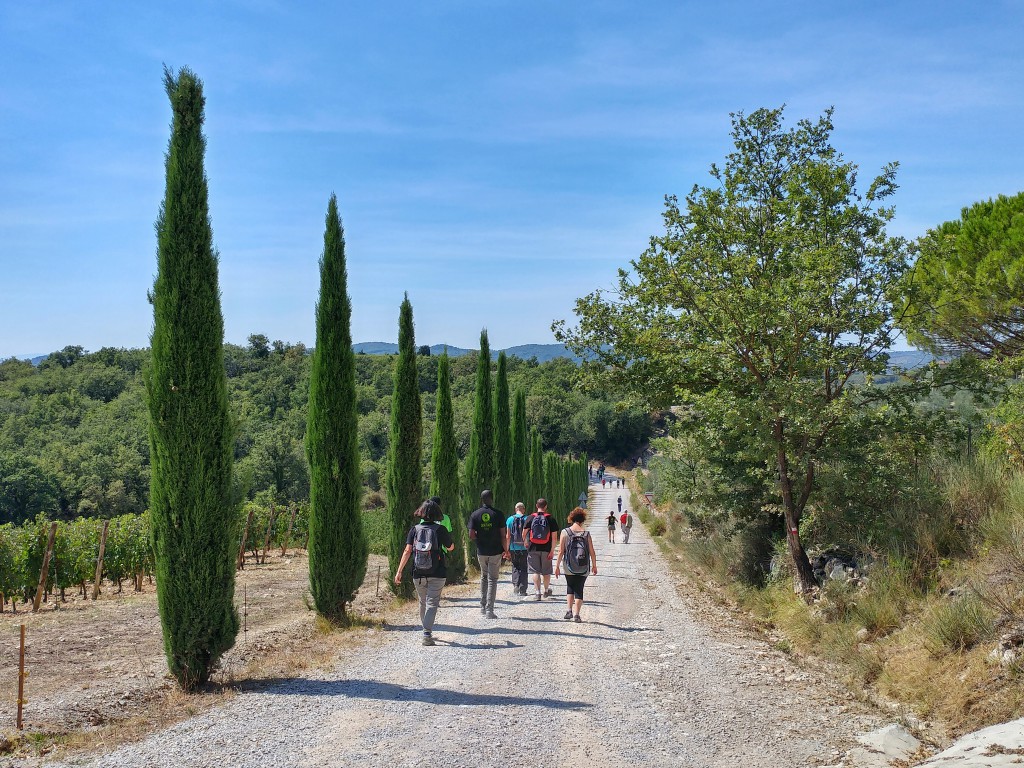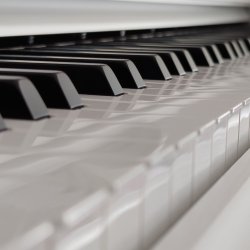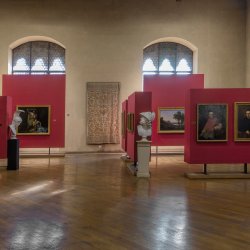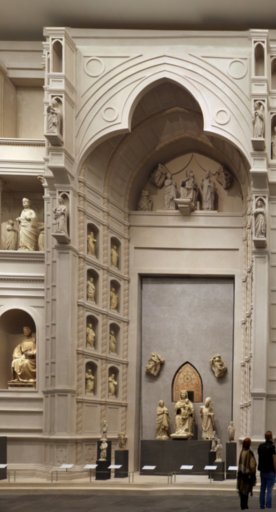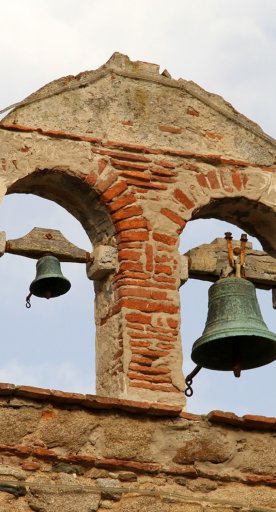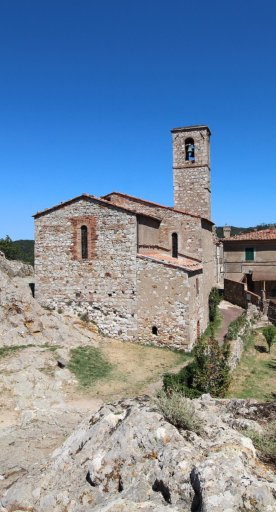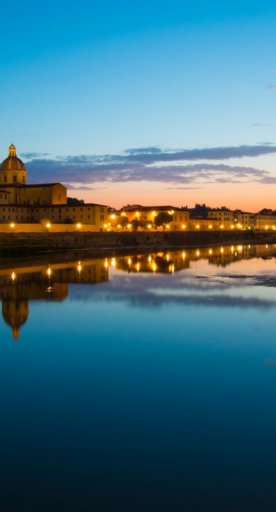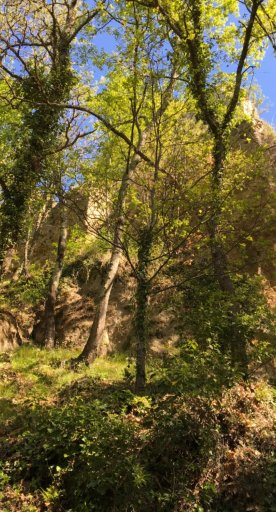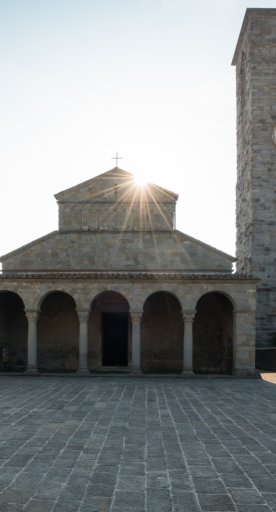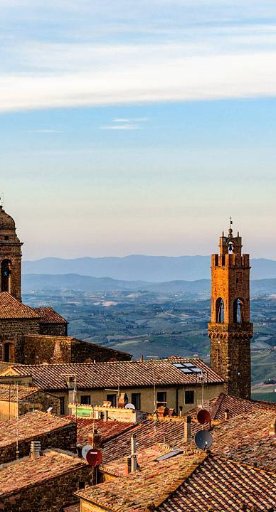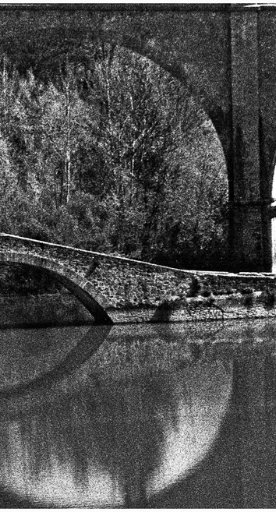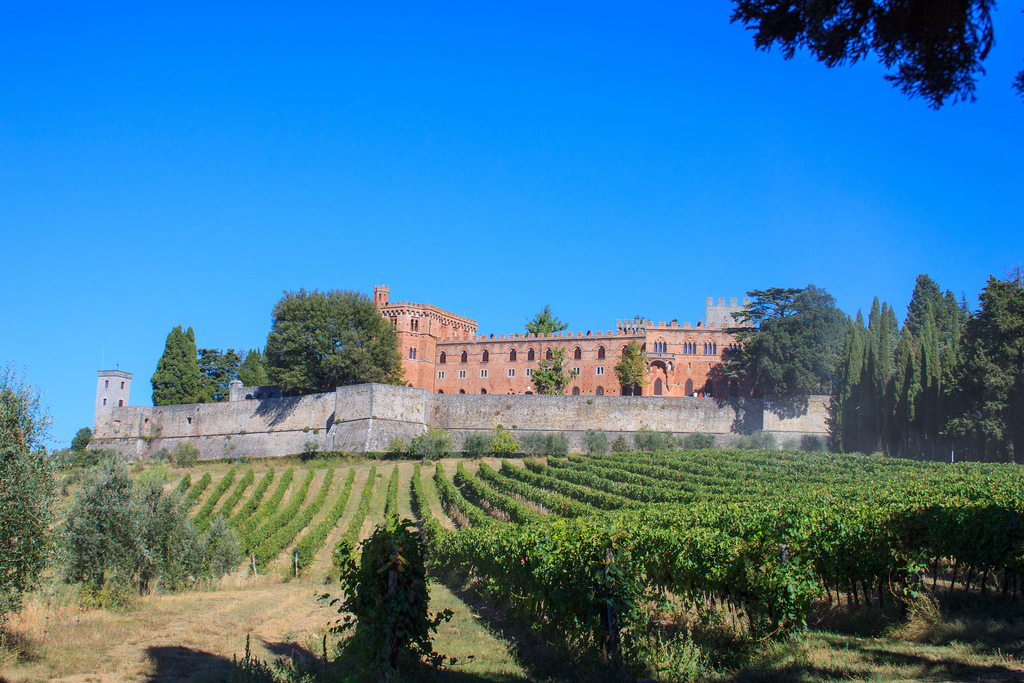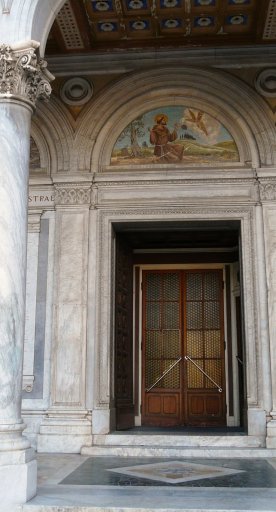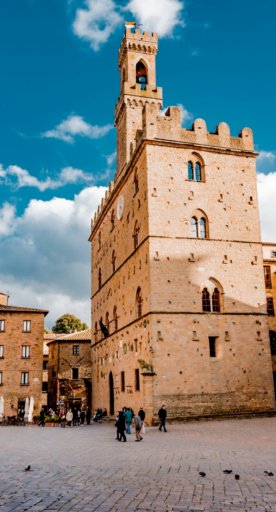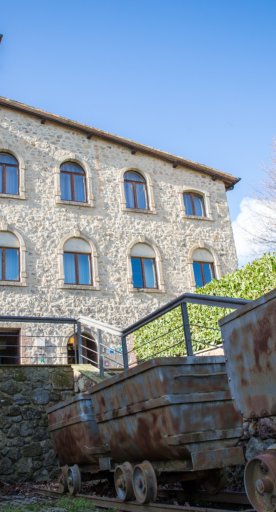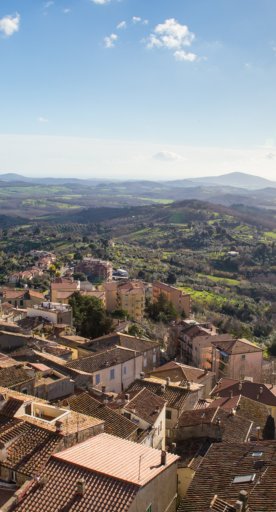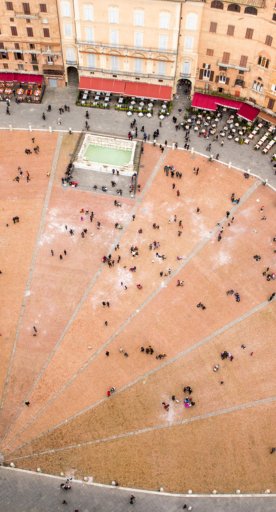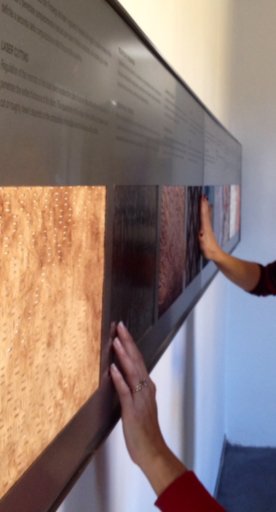
Discover Gaiole in Chianti
Here are a few tips on what to see, do and taste in Gaiole in Chianti and the surrounding area.
Rolling hills garnished with long and dense vineyards, historic castles, cozy hamlets and top-level wineries are some of the tempting destinations that await you in the Chianti area of Tuscany. Here are a few tips on what to see, do and taste in Gaiole in Chianti and the surrounding area.
-
1.Castles
-
2.Food, wine and history
-
3.Hamlets
-
4.Sport and outdoor
Castles
Nestled in the very heart of the Chianti region, Gaiole in Chianti is home to many well-preserved castles, to the point that you can choose from among five different itineraries to uncover them all. Nowadays some of them are wine estates, event venues and wedding locations and in most cases are open to the public. Let us spoil you a bit.
- Brolio Castle or “Castello di Brolio” has belonged to the influential Ricasoli family since 1141. From that moment on, the manor has been linked to wine production, which makes it the oldest winery in Italy.
Today, the Castle continues to make a name for itself as a huge Chianti Classico-producing estate. The Ricasoli Barons still live there, but you can still visit the garden, the museum and enjoy wine tastings and guided tours. - The history of the “Castello di Cacchiano” is also linked to the Ricasoli family. Dating back to the early 1000’s, the complex maintained its function as a fortalice until the mid 16th century, when it was transformed into a villa and farm.
Nowadays, the Castle treats its visitors with a wide range of products, from different Chianti Classico varieties to prestigious olive oils, and also offers accommodation.
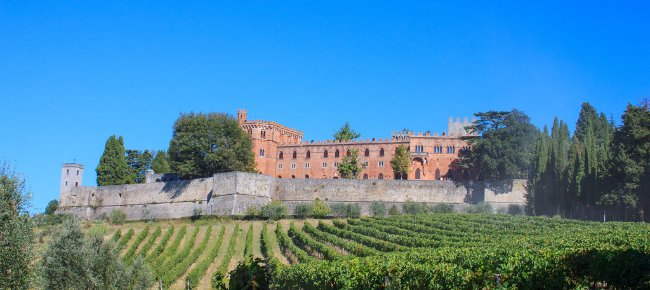
- The imposing “Castello di Meleto” as well, in its oldest parts, dates back to the year 1000. It belonged to Benedictine monks and then to the Ricasoli family, who took possession of the castle in 1200 (we did tell you they were a powerful family, didn’t we?).
Since 1968, the Viticola Toscana Spa, a farm specialized in production of Chianti Classico DOCG, bought the property. The Castle of Meleto organizes guided tours of the castle’s main floor and its small theatre and cellars. It also hosts events and weddings. More info on the official website of the Castle of Meleto. - The Castello di Monteluco overlooks the village of Lecchi, a few kilometres south of Gaiole in Chianti. In contrast to the complexes we mentioned above, the castle always served its original purpose as a real outpost of soldiers and was never turned into a manor house. The complex was recently renovated and divided in private stately homes, but the original appearance remained intact. You also should know that the massive tower defending the weaker side of the castle, the “Nibbio”, is an independent apartment offering accommodation. Here’s the link to the Monteluco Castle website.
- Atop a hill a little further south of Badia a Coltibuono stand the ruins of Montegrossi castle, an important bulwark of defense back in medieval times. Fun fact: the complex withstood repeated fierce attacks throughout the centuries, but couldn’t do anything to resist the assaults undertaken in 1530 by the army of Charles V. The castle was unfortunately destroyed and, since then, the ruins have been abandoned.
Castle of Meleto
The imposing “Castello di Meleto” as well, in its oldest parts, dates back to the year 1000. It belonged to Benedictine monks and then to the Ricasoli family, who took possession of the castle in 1200 (we did tell you they were a powerful family, didn’t we?).
Since 1968, the Viticola Toscana Spa, a farm specialized in production of Chianti Classico DOCG, bought the property. The Castle of Meleto organizes guided tours of the castle’s main floor and its small theatre and cellars. It also hosts events and weddings. More info on the official website of the Castle of Meleto.
Monteluco Castle
The Castello di Monteluco overlooks the village of Lecchi, a few kilometres south of Gaiole in Chianti. In contrast to the complexes we mentioned above, the castle always served its original purpose as a real outpost of soldiers and was never turned into a manor house. The complex was recently renovated and divided in private stately homes, but the original appearance remained intact. You also should know that the massive tower defending the weaker side of the castle, the “Nibbio”, is an independent apartment offering accommodation. Here’s the link to the Monteluco Castle website.
Montegrossi castle
Atop a hill a little further south of Badia a Coltibuono stand the ruins of Montegrossi castle, an important bulwark of defense back in medieval times. Fun fact: the complex withstood repeated fierce attacks throughout the centuries, but couldn’t do anything to resist the assaults undertaken in 1530 by the army of Charles V. The castle was unfortunately destroyed and, since then, the ruins have been abandoned.
Castle of Meleto
The imposing “Castello di Meleto” as well, in its oldest parts, dates back to the year 1000. It belonged to Benedictine monks and then to the Ricasoli family, who took possession of the castle in 1200 (we did tell you they were a powerful family, didn’t we?).
Since 1968, the Viticola Toscana Spa, a farm specialized in production of Chianti Classico DOCG, bought the property. The Castle of Meleto organizes guided tours of the castle’s main floor and its small theatre and cellars. It also hosts events and weddings. More info on the official website of the Castle of Meleto.
Monteluco Castle
The Castello di Monteluco overlooks the village of Lecchi, a few kilometres south of Gaiole in Chianti. In contrast to the complexes we mentioned above, the castle always served its original purpose as a real outpost of soldiers and was never turned into a manor house. The complex was recently renovated and divided in private stately homes, but the original appearance remained intact. You also should know that the massive tower defending the weaker side of the castle, the “Nibbio”, is an independent apartment offering accommodation. Here’s the link to the Monteluco Castle website.
Montegrossi castle
Atop a hill a little further south of Badia a Coltibuono stand the ruins of Montegrossi castle, an important bulwark of defense back in medieval times. Fun fact: the complex withstood repeated fierce attacks throughout the centuries, but couldn’t do anything to resist the assaults undertaken in 1530 by the army of Charles V. The castle was unfortunately destroyed and, since then, the ruins have been abandoned.
Castle of Meleto
The imposing “Castello di Meleto” as well, in its oldest parts, dates back to the year 1000. It belonged to Benedictine monks and then to the Ricasoli family, who took possession of the castle in 1200 (we did tell you they were a powerful family, didn’t we?).
Since 1968, the Viticola Toscana Spa, a farm specialized in production of Chianti Classico DOCG, bought the property. The Castle of Meleto organizes guided tours of the castle’s main floor and its small theatre and cellars. It also hosts events and weddings. More info on the official website of the Castle of Meleto.
Monteluco Castle
The Castello di Monteluco overlooks the village of Lecchi, a few kilometres south of Gaiole in Chianti. In contrast to the complexes we mentioned above, the castle always served its original purpose as a real outpost of soldiers and was never turned into a manor house. The complex was recently renovated and divided in private stately homes, but the original appearance remained intact. You also should know that the massive tower defending the weaker side of the castle, the “Nibbio”, is an independent apartment offering accommodation. Here’s the link to the Monteluco Castle website.
Montegrossi castle
Atop a hill a little further south of Badia a Coltibuono stand the ruins of Montegrossi castle, an important bulwark of defense back in medieval times. Fun fact: the complex withstood repeated fierce attacks throughout the centuries, but couldn’t do anything to resist the assaults undertaken in 1530 by the army of Charles V. The castle was unfortunately destroyed and, since then, the ruins have been abandoned.
Food, wine and history
�Between one castle and another, we already gave you some food & wine related tips, that’s (luckily) how it works when dealing with the Chianti area (and Tuscany itself)! Let’s add a few more names to the must-taste list.
- As you may already know “badia”, in italian, stands for an old abbey: documented evidence traces the history of Badia a Coltibuono back to the year 1037, when a small church was transformed into a monastery complex and entrusted to Vallombrosan monks. In the early XIX, under Napoleonic rule, the monks were forced to leave and the abbey was sold at auction.
Nowadays, the complex is a renowned wine estate producing DOCG and IGT Chianti Classico wines and also offers accommodation. - The top-rated Castello di Ama winery was founded in the 1960s in Ama, a small hamlet nestled in the gentle hills south of Gaiole. The estate currently covers about 250 hectares, 90 of which are lined with vineyards (mostly Sangiovese, of course) and 40 of which are covered in olive oil trees.
�Between one castle and another, we already gave you some food & wine related tips, that’s (luckily) how it works when dealing with the Chianti area (and Tuscany itself)! Let’s add a few more names to the must-taste list.
Badia a Coltibuono
As you may already know “badia”, in italian, stands for an old abbey: documented evidence traces the history of Badia a Coltibuono back to the year 1037, when a small church was transformed into a monastery complex and entrusted to Vallombrosan monks. In the early XIX, under Napoleonic rule, the monks were forced to leave and the abbey was sold at auction.
Nowadays, the complex is a renowned wine estate producing DOCG and IGT Chianti Classico wines and also offers accommodation. Have a look at the official website.
Castello di Ama
The top-rated Castello di Ama winery was founded in the 1960s in Ama, a small hamlet nestled in the gentle hills south of Gaiole. The estate currently covers about 250 hectares, 90 of which are lined with vineyards (mostly Sangiovese, of course) and 40 of which are covered in olive oil trees.
Hamlets
When in the area of Gaiole in Chianti, also consider paying a visit to the quintessentially Tuscan villages of Vertine, Barbischio and Lecchi, all three of them dating back to the XI century.
- Vertine is an oval-shaped walled hamlet, which still cherishes most of its original buildings and fortifications: to mention a few, the beautiful limestone tower standing next to the gate and the Parish church of St. Bartholomew.
- Must sees in Barbischio are the tower overlooking the village (the remains of an ancient castle), the parish church dedicated to St. James and the “Molino di Barbischio”, a medieval housing complex.
- Lastly, Lecchi in Chianti stars, among other things, the Castello di Monteluco we mentioned above and the abbey of San Michele.
When in the area of Gaiole in Chianti, also consider paying a visit to the quintessentially Tuscan villages of Vertine, Barbischio and Lecchi, all three of them dating back to the XI century. Vertine is an oval-shaped walled hamlet, which still cherishes most of its original buildings and fortifications: to mention a few, the beautiful limestone tower standing next to the gate and the Parish church of St. Bartholomew.
Must sees in Barbischio are the tower overlooking the village (the remains of an ancient castle), the parish church dedicated to St. James and the “Molino di Barbischio”, a medieval housing complex. Lastly, Lecchi in Chianti stars, among other things, the Castello di Monteluco we mentioned above and the abbey of San Michele.
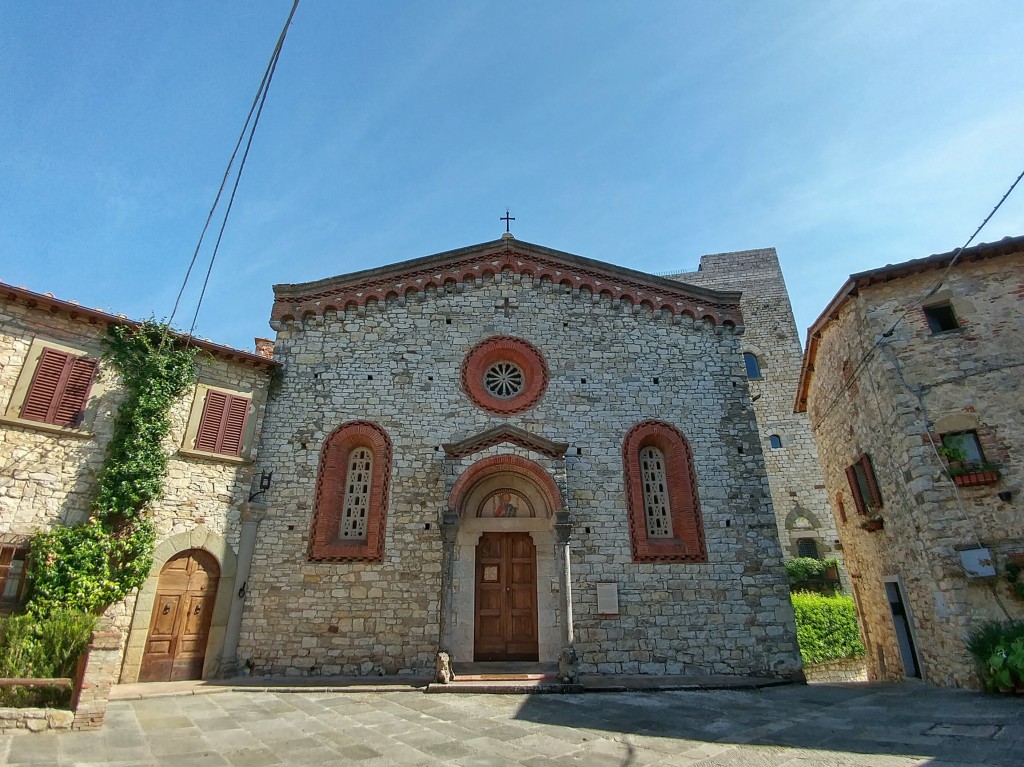
Sport and outdoor
Every first sunday of October, since 1997, Gaiole in Chianti hosts “L’Eroica”, a unique bike race happening exclusively on gravel roads across Chianti, Valdarbia and Val d’Orcia, where only vintage bikes dating back to 1987 or older are allowed. And don’t worry, in case you are not able to take part in the Eroica during the official dates, you can always test your skills whenever you want by riding the 209 kilometres Permanent route.
Learn more about Gaiole in Chianti on Toscana Ovunque Bella, here.
